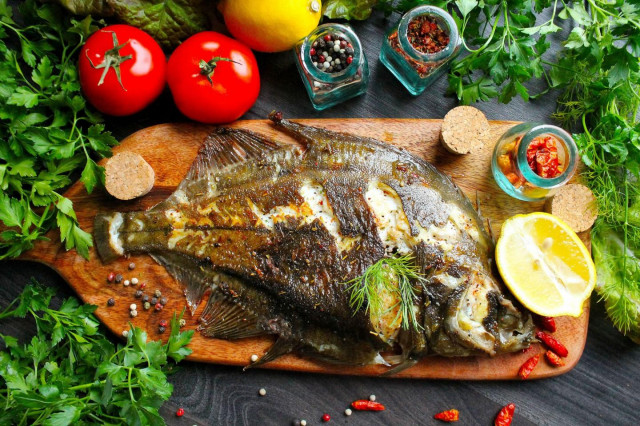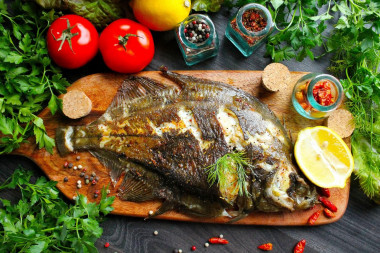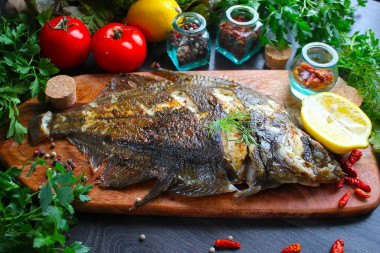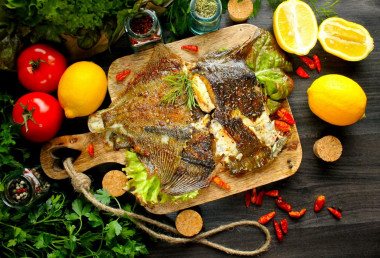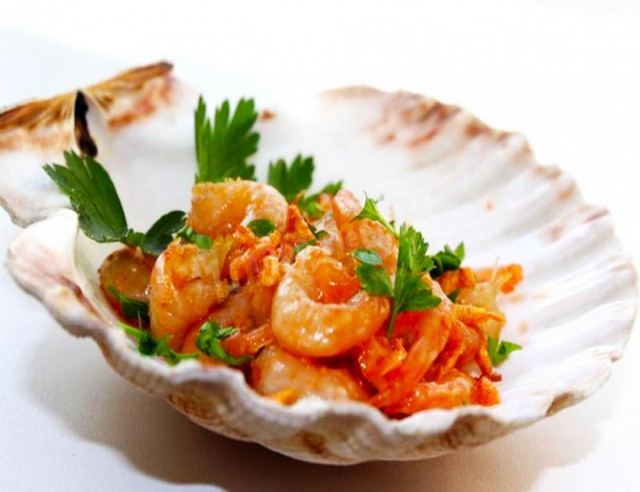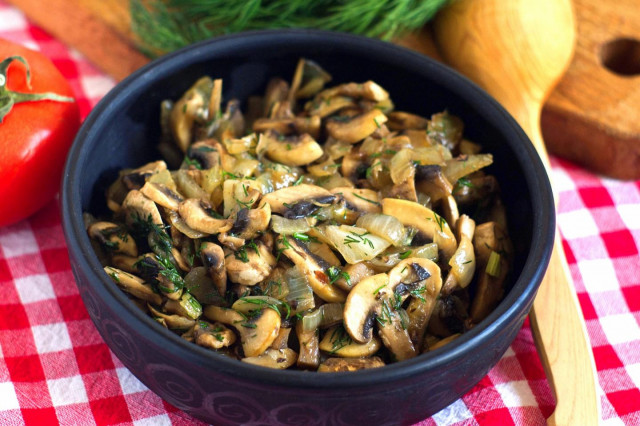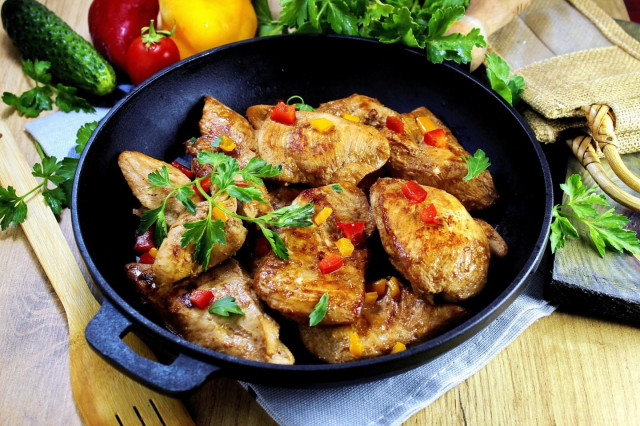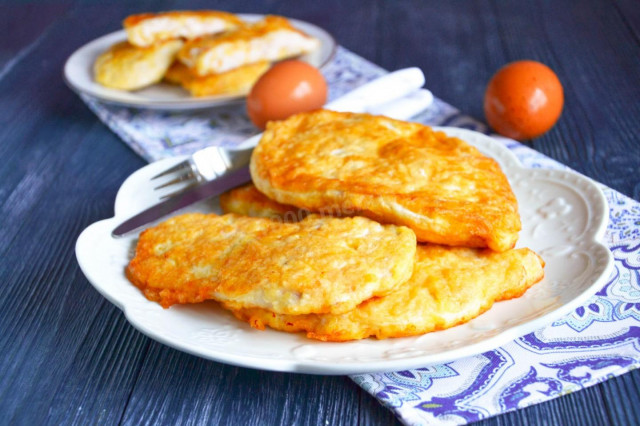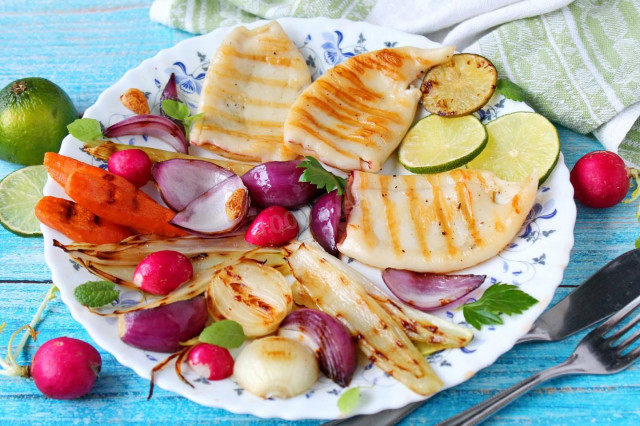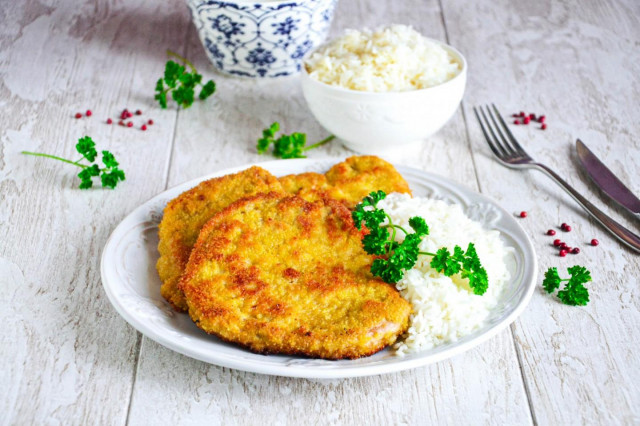Composition / ingredients
Step-by-step cooking
Step 1:
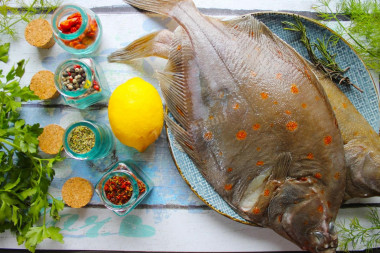
How to fry a flounder in a frying pan entirely? Prepare all the necessary products according to the list. If you have frozen fish, then remove it from the freezer and leave it to thaw completely at room temperature. The recipe used fresh fish, so the cooking time is indicated without taking into account defrosting. For faster defrosting, immerse the flounder in cool water and leave it there until thawing.
Step 2:
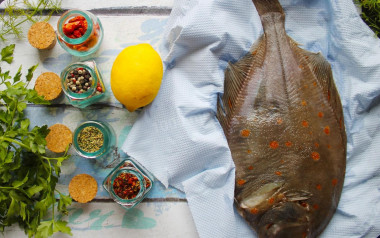
How to carve flounder for frying? Gut the flounder and remove the gills. If desired, the head and fins can be cut off, I did not do this and fried the fish as it is. Wash the flounder under running cold water and dry thoroughly with paper napkins. We will marinate the fish, so excess moisture needs to be removed.
Step 3:
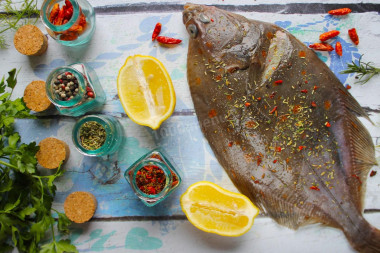
Make shallow cuts on the fish on both sides. Rub the flounder with a small amount of salt, sprinkle with a mixture of ground peppers, as well as any favorite seasonings. I used dry Provencal herbs, they include rosemary, thyme, basil, marjoram, parsley and oregano, they all go well with sea fish. Sprinkle lemon juice on top.
Step 4:
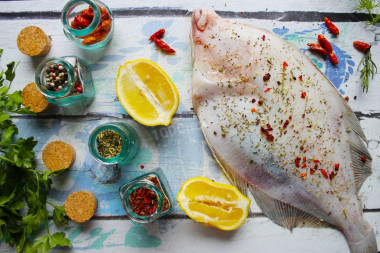
Turn the carcass over and do the same thing. Leave the fish in this way for 15-20 minutes, this will be quite enough for the tender meat to be marinated to the desired degree.
Step 5:
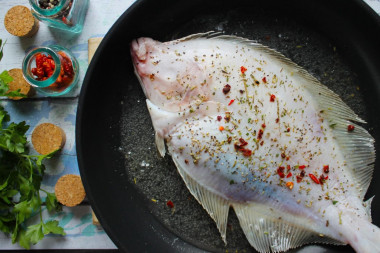
Pour vegetable oil into a frying pan with a thick bottom (you can use less than indicated in the recipe). Heat it up and send the flounder to fry. Fry the dark side first. Set the fire on the stove to medium level, leave the fish for 10-12 minutes. But make sure that nothing burns.
Step 6:
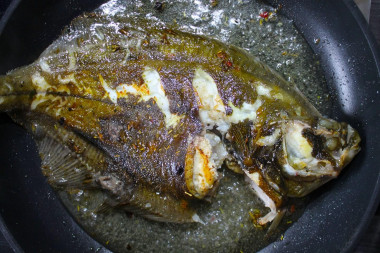
Next, using a spatula, turn the flounder to the other side and cook for the same amount (about 10 minutes.) Note that the frying time depends on the power and type of plate, on the quality and thickness of the pan.
Step 7:
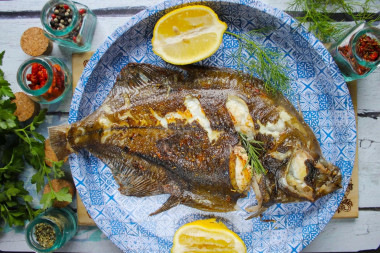
Sprinkle the finished fish again with lemon juice and pepper if desired. You can serve flounder whole with fresh vegetables or lettuce leaves.
Step 8:
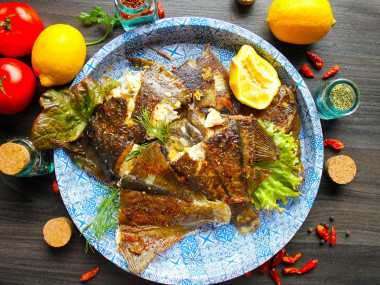
For convenience, divide the finished fish into portions and serve until it cools down!
Flounder itself is a large fish, so if you decide to fry it whole, then choose a large frying pan with a diameter of at least 28 cm. The carcasses didn't fit in my frying pan, so I cut off the tails of the fish.
There is a second option for roasting a whole carcass. After marinating, roll the flounder in flour and send it to fry further. I prefer fried fish without flour, so more often I cook this way.
Wonderful and very tasty fish, be sure to try it!
Bon appetit!
If you use ready-made spice mixes, be sure to read the composition on the package. Often, salt is already present in such mixtures, take this into account, otherwise you risk over-salting the dish.
Since the degree of salinity, sweetness, bitterness, sharpness, acid, burning is individual for everyone, always add spices, spices and seasonings, focusing on your taste! If you put some of the seasonings for the first time, then keep in mind that there are spices that it is especially important not to shift (for example, chili pepper).
Use oil with a high smoking temperature for frying! Any oils are useful only until a certain temperature is reached - the point of smoking, at which the oil begins to burn and toxic substances, including carcinogens, are formed in it.
Unrefined oils, with rare exceptions, have a low smoking point. There are a lot of unfiltered organic particles in them, which quickly begin to burn.
Refined oils are more resistant to heating, and their smoking point is higher. If you are going to cook food in the oven, on a frying pan or grill, make sure that you use oil with a high smoking point. The most common of the oils with a high smoking point: refined varieties of sunflower, olive and grape.
To check whether the oil has warmed up well enough in the pan, you can do it in a simple way. Lower a wooden spatula into it. If bubbles have gathered around it, then you can start the frying process.
Caloric content of the products possible in the composition of the dish
- Lemon - 16 kcal/100g
- Lemon zest - 47 kcal/100g
- Hot smoked flounder - 192 kcal/100g
- Boiled flounder - 103 kcal/100g
- Fresh flounder - 83 kcal/100g
- Ground black pepper - 255 kcal/100g
- Vegetable oil - 873 kcal/100g
- Salt - 0 kcal/100g
- Spices dry - 240 kcal/100g
- Ground red pepper - 318 kcal/100g

